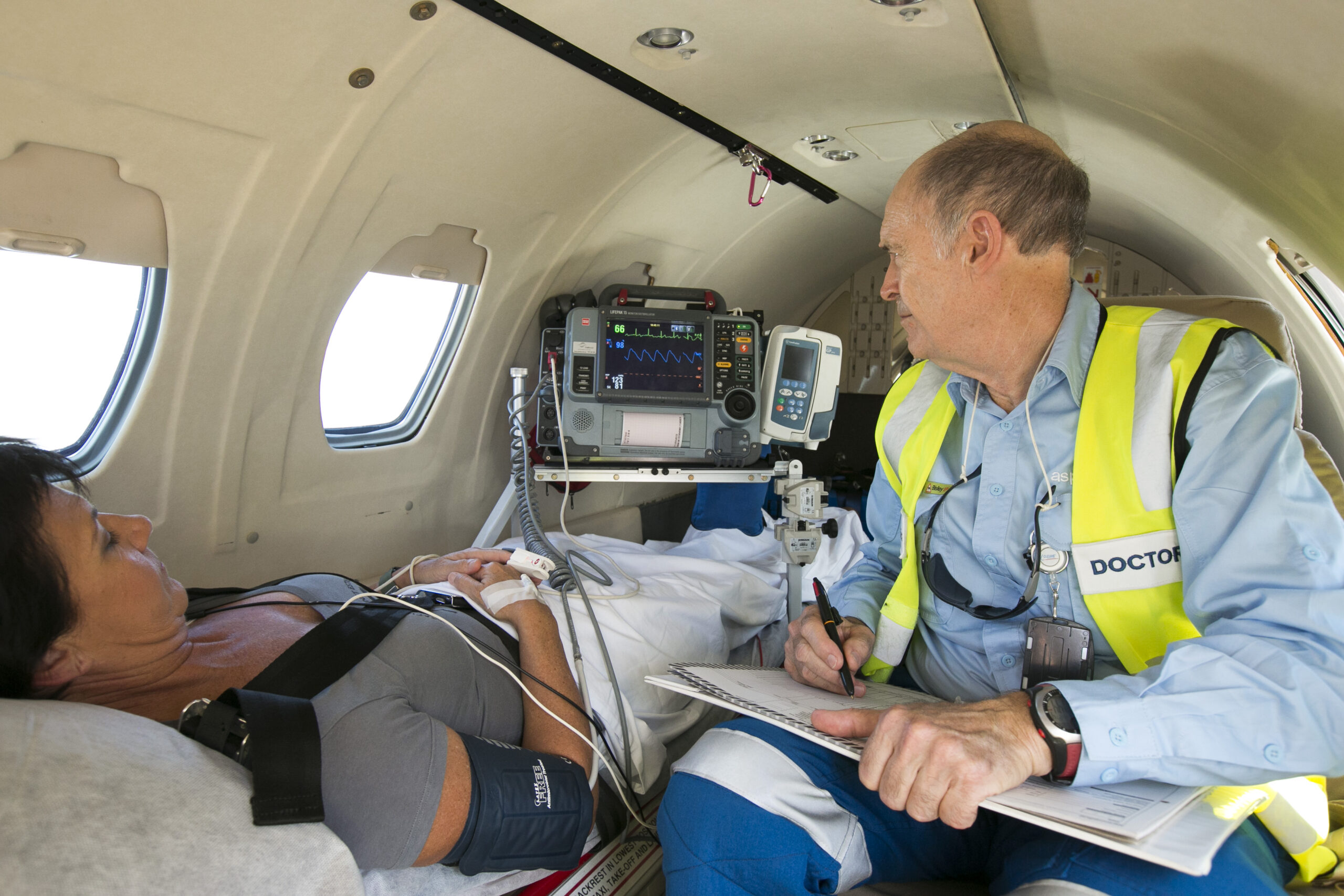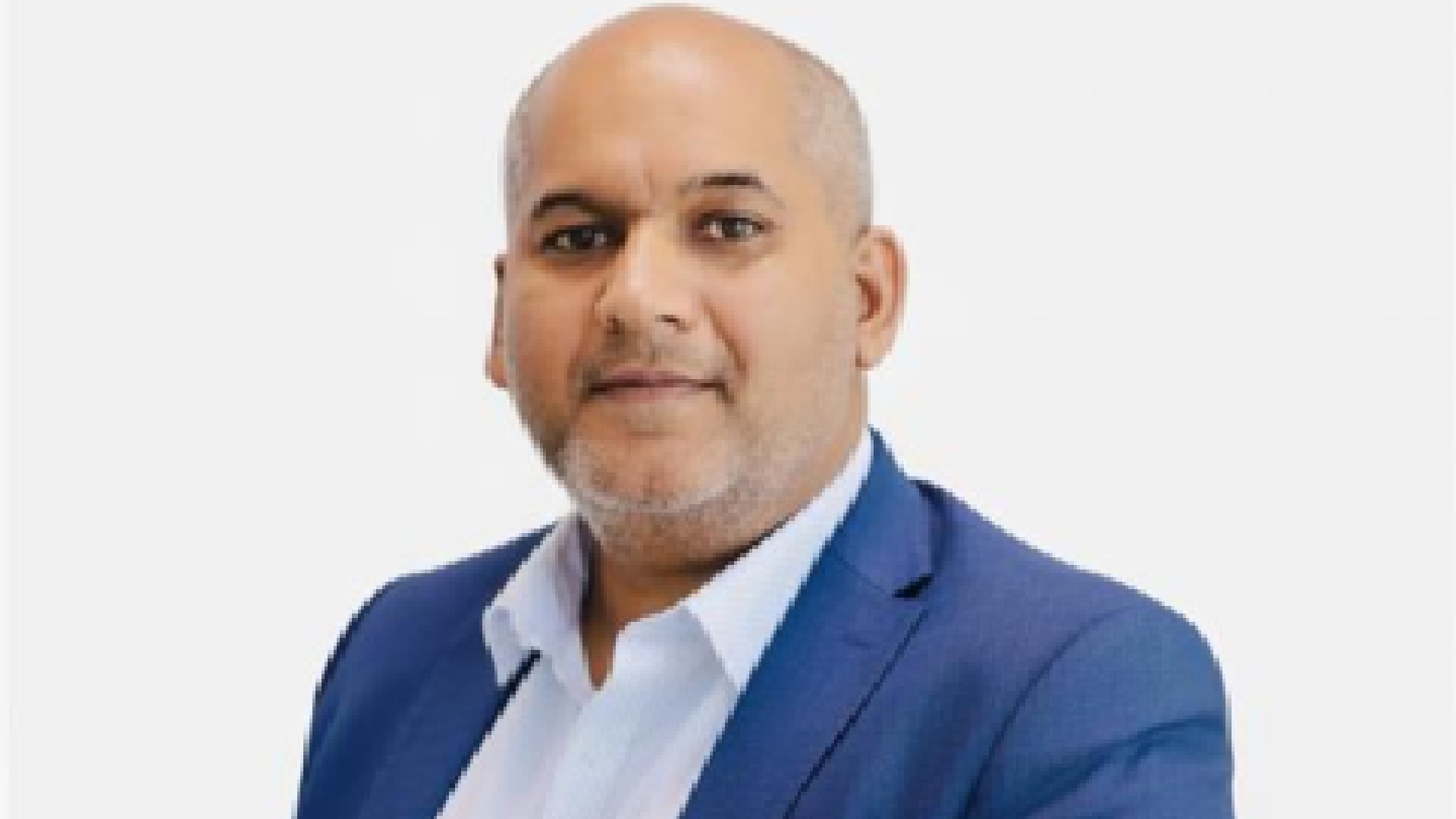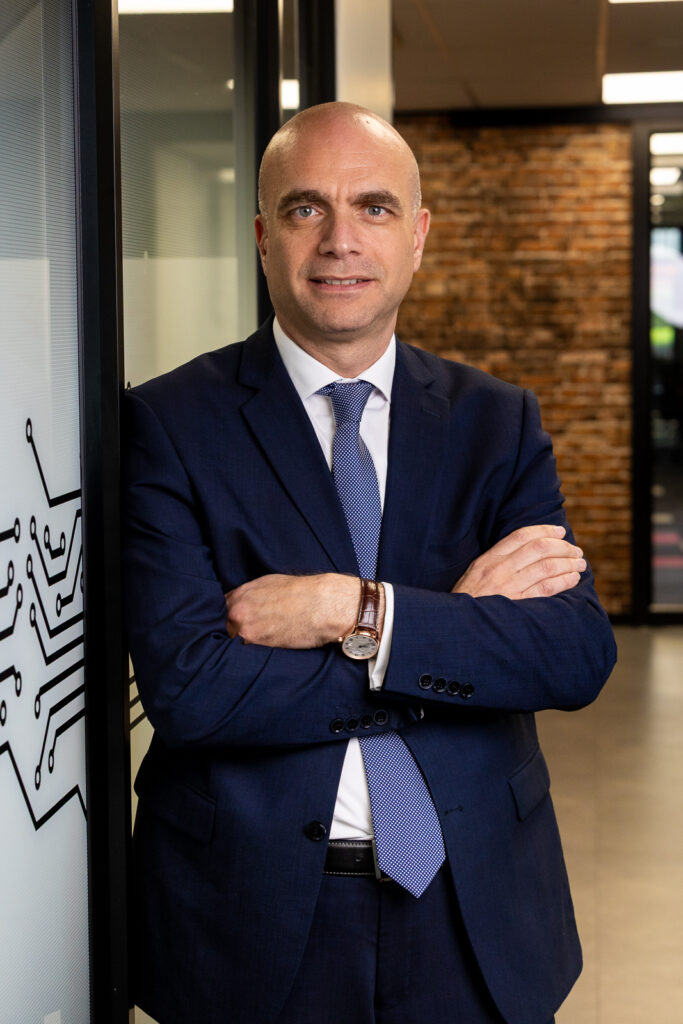Tech Interviews
Driving differentiation
Gita Ghaemmaghami, Regional Marketing Communications Manager & Head of PR at Sony Mobile Communications MEA discusses trends and strategy for the company in the region
Is the market demand for feature rich smartphones growing in the region?
The Middle East is a region which has exhibited and continues to exhibit strong growth and the fundamentals of its economy indicate that its potential will remain buoyant.
The region has young and tech savvy consumers who are brand conscious, seeking premium products. UAE specifically is an important market as it is a hub and trendsetter for the rest of the region.
The region has always been very important for Sony Mobile and we look forward to continued growth with the help of our distribution and retail partnerships in Middle East and Africa.
What is the company’s outlook on demand vis-a-vis challenges also related to the stiff competition from other top brands?
We will continue to differentiate our products by leveraging Sony assets such as our leading camera technologies, and we will also continue to innovate technologies, applications, and user experiences that deliver new value to customers.
In addition, with Sony’s unique spirit of innovation, we will pursue new business opportunities wherever possible to bring forth new products and services that enrich users’ lives through the new means of communication they make possible. Enhancing relationship with operators, distributors and retailers in market is one of our priorities to provide best experiences for our consumers.
Discuss the brand’s focus on the premium segment vis-a-vis the mid-range or the entry segment phones market?
Each segment plays a role in meeting the demands of the market and bringing alternatives to consumers, our strategy is to focus on Premium and mid segments. Our premium range of smartphones, the Xperia X Series and Xperia Z5 series are very popular for its sleek design and its premium look and top of the range performance. We have also introduced a mid-range smartphone, Xperia XA/ XA Ultra, which offers consumers great features of the Xperia Z5 and Xperia X series at an economical price range.
What have been recent launches by Xperia in the premium segment and are the current flagship models for the company in the region?
Xperia X has been launched in the GCC starting June, we have also announced Xperia X and Xperia XA Ultra at the mid segment which are expected to be available in the region in July/August.
What are the standout features in some of your current and new top end models?
The Xperia X features Sony’s unique camera technology, Predictive Hybrid Autofocus, which allows you to track an object, and then cleverly predicts its movement to give clear, blur-free shots. So, even if one can’t predict where the shot is headed, the smartphone can. Also it incorporates Sony’s smart battery management to deliver up to two days battery life[i]. Not only will it keep the phone running far longer after one charge, but the Xperia X will deliver up to two times battery lifespan where most smartphone batteries quickly decline in strength, using its ground-breaking Qnovo Adaptive charging which maintains battery health while charging.
With Xperia XA consumers can enjoy a curved glass display that seamlessly meets its rounded frame; Xperia XA is as pleasing to the eye, as it is to the hand. It features a distinctive and beautifully integrated edge-to-edge display that stretches over the full width of the phone, to make full use of the 5” display.
How is the X range different from the Z series of phones in terms of range and market positioning? Also discuss positioning of the other series?
The X series is a brand new concept under the new brand vision which sets it apart from our previous range of not only the Xperia Z series, but also our entry and mid-range series line-ups. With the direction and vision focusing on enriching people’s lives through new intelligent communication, it was only fitting the latest range was differentiated by a new series name.
How is Sony addressing VR technologies in phones? Do you see VR as a factor that can help improve demand for new phones?
There is no doubt that VR has became a new trend in current technologies however I would not be able to comment on utilizing VR in our smartphones for time being.
How frequently does the company refresh flagship models?
We do look at the consumers & market demand and we continue to provide consumers with latest innovation and technology.
What are expected new launches before the year ends?
We would not be able to confirm the future possibilities of our product line-up; we have entered a new chapter of our Xperia brand by launching new Xperia X series at MWC.
Tech Interviews
How Aspen Medical is Leveraging AI to Deliver Healthcare in Crisis Zones and Remote Regions

Exclusive Interview with Glenn Keys, Founder and Executive Chair, Aspen Medical

Aspen Medical has a strong legacy in humanitarian and military healthcare. How does AI fit into your long-term vision for transforming healthcare delivery, particularly in the UAE and MEA region?
Everything we do at Aspen Medical is health-led and technology-enabled. Our existing systems, governance, training and so on, are about the delivery of high-quality and safe care wherever our clients need us. Technology, including artificial intelligence (AI) enables us to do this. At Aspen Medical, we see AI as an integral part of our strategy to reimagine healthcare access and delivery. In the UAE and broader MEA region, rapid development is creating new demands for precision, resilience and scalability in health systems. AI will enable us to meet those demands in ways that are faster and smarter, for example, embedding AI into remote diagnostics, predictive modelling and digital triage, especially in primary and emergency care settings. In the UAE, where digital transformation is a national priority, we’re aligning with initiatives like the National Strategy for Artificial Intelligence 2031. AI strengthens our capacity to deliver care that is accessible, responsive and tailored to diverse populations.
In humanitarian zones where traditional infrastructure is limited or absent, how can AI-powered healthcare solutions help close the gap in access, diagnostics, and continuity of care?
In regions facing instability, displacement or lacking basic infrastructure, AI can help overcome barriers that have long blocked access to care. Using AI-enabled triage tools, speech recognition and machine translation, language and literacy barriers are reduced whilst guiding patients toward appropriate care pathways. AI technologies that support health workers on the ground – scanning images, analysing vitals and supporting early intervention – can be embedded into mobile devices allowing deployable clinical teams to operate in even the most remote or disconnected settings. Combined with cloud-based health records, AI can ensure continuity of care across humanitarian corridors. It’s not going to be about replacing clinicians; it will be about improving outcomes where they are needed most.
Deployable healthcare is a core pillar of Aspen Medical’s work. How is AI being used to prepare healthcare professionals for unpredictable, high-stress environments such as disaster zones or military operations – and what outcomes have you seen so far?
When lives are on the line, preparation is everything. That’s why we’re working towards integrating AI into the way we train and prepare our deployable healthcare teams. Our goal is to enable clinicians and responders to experience realistic, high-stress environments ranging from natural disasters to military deployments before they ever set foot in the field. By developing AI-powered virtual reality and adaptive learning platforms, we aim to replicate mass casualty incidents, austere conditions, and trauma scenarios. This technology will allow us to track decision-making under pressure and tailor learning in real time. We’re striving to build systems that enhance response times, improve triage accuracy, and boost confidence in the field. Ultimately, we’re working towards using AI not only to strengthen operational readiness but also to reduce burnout and build psychological resilience before deployment.
What role does AI play in enhancing the efficiency and responsiveness of mobile clinics and field hospitals? How is Aspen Medical applying these technologies to support remote workforce health in sectors like oil & gas and humanitarian aid?
AI is beginning to play a supportive role across our mobile clinics and field hospitals, helping teams make better, faster decisions in complex environments. At Aspen Medical, we’re exploring how AI can assist with triage, inventory management, logistics, and reporting, always with clinicians and field experts in control. Early algorithms are helping us analyse trends in patient data and resource use, offering insights that complement, not replace, human judgement. In sectors such as oil and gas, AI tools are being trialed to identify emerging health patterns, like fatigue or heat stress, by combining wearable and clinical data under the supervision of our medical staff. In humanitarian and disaster response settings, these systems are helping improve coordination and data continuity as populations move across regions. Our focus is on using AI responsibly to enhance situational awareness and operational resilience, keeping humans at the centre of every decision that affects care.
Is Aspen Medical collaborating with governments or local health authorities to scale AI-driven solutions across the region as well as globally? What have been the most promising outcomes or lessons from these partnerships?
Yes, we are working directly with health ministries, defence forces and regulators across the UAE and other MEA countries to localise AI solutions that meet national goals. These partnerships are built on co-design: we bring our clinical expertise and global experience, and local authorities bring contextual insight and public health priorities. The most promising outcomes stem from long-term trust. When local systems are involved from the start, adoption increases and impact is sustained.
What would you say are the biggest barriers to AI adoption in healthcare today, and how can companies like Aspen Medical ensure these technologies are deployed ethically and equitably across diverse communities?
Ethical deployment is the challenge and the opportunity. AI is only as effective as the data behind it, and in healthcare, bias or poor-quality data can be dangerous – it is vital that there are strict protocols to validate every AI tool. We prioritise transparency, clinical oversight and community input. We also advocate for inclusive AI, built with diverse datasets that reflect different genders, ethnicities and disease profiles.
Looking ahead, which emerging AI technologies do you believe have the greatest potential to revolutionize healthcare? How do you see Aspen Medical’s role evolving as AI becomes more integrated into healthcare infrastructure?
We believe technologies like generative AI, clinical large language models and AI-assisted imaging will drive the next wave of transformation. Imagine a frontline clinician dictating hands-free notes, while a real-time AI scribe prepares documentation and decision-support summaries. Or an emergency responder receiving instant feedback from an AI model scanning a wound image. Our goal is to leverage federated learning so AI systems can learn from decentralised, privacy-protected data sets. This approach will be critical for delivering safe, compliant, and coordinated care across borders. Our role is to be the connector: bringing together best-in-class technology, robust clinical practice and local insight to deliver safe, smart and scalable healthcare.
Finally, as a founder, what drives your commitment to innovation in healthcare? What legacy do you hope Aspen Medical leaves in the AI healthcare space, especially in regions facing complex and urgent challenges?
Innovation is in Aspen Medical’s DNA. We started by asking: How do we deliver high-quality care where others can’t or won’t go? Today, AI gives us powerful new ways to answer that question. Vitaport, our flagship workplace health and wellbeing platform, developed by Aspen Medical, is the embodiment of that vision. Using agentic AI grounded in clinical governance to deliver personalised care, real-time insights and behaviour-shaping support. But whilst our tools evolve, our purpose remains the same: people are always at the centre. I’m driven by the belief that healthcare must be a force for equity. AI is a tool, not a destination – it helps us extend our reach, deepen our impact, and build systems that are smarter, fairer and more human. The legacy I hope we leave is simple: that we used technology not just to innovate, but to uplift. Especially where the stakes are highest.
Tech Interviews
INCEPTION SHOWCASES THEIR LATEST INNOVATION AT GITEX GLOBAL 2025

Attributed to Vishal Mishra, Director of AI and Software Engineering, Inception, a G42 company
Inception’s presence at GITEX this year focused on bringing enterprise-ready AI solutions to life. Could you walk us through the key innovations being showcased and what makes them stand out in the regional AI landscape?
At GITEX Global 2025, under the theme ‘Authentic Intelligence. Real Impact.’, we showcased our suite of domain-specific and sector-agnostic AI products that are transforming how organizations operate and make decisions. This included (In)Sight, (In)Alpha, (In)Procurement, (In)Business Human Capital, (In)Business Productivity, (In)Business Process, (In)Business Customer Experience, and (In)Media, with a selection of them being demonstrated. These products showed how Inception is helping governments and organizations accelerate transformation, improve efficiency, and generate measurable progress across sectors.
We are also announced a series of strategic partnerships to strengthen our capabilities and global reach and reflect Inception’s commitment to bringing authentic intelligence to life, driving enterprise transformation, and contributing to the UAE’s vision of becoming an AI-native nation.
What distinguishes these innovations in the regional AI landscape is their enterprise readiness and practical impact. Each product has been designed to integrate seamlessly into real operational environments, enabling businesses and government entities to automate complex processes, enhance decision-making, and drive value creation responsibly and transparently. Our focus is on delivering AI that is explainable, compliant, and aligned with national priorities for sustainable digital transformation.
Our presence and partnerships reflect Inception’s commitment to bringing authentic intelligence to life, driving enterprise transformation, and contributing to the UAE’s vision of becoming an AI-native nation.
Inception has evolved rapidly from an AI research hub to a product-first company. Can you give us an overview of your current AI-native products and how they are enabling organizations to automate complex workflows and make smarter decisions?
Inception’s transition from a research-driven institute to a product-first company reflects a clear focus on building practical, enterprise-ready AI that delivers measurable outcomes. Our current portfolio of AI-native products is designed to address specific business and leadership challenges while enabling enterprises to automate complex workflows, generate real-time insights, and make data-driven decisions with confidence.
Our suite of products spans multiple layers of enterprise operations:
- (In)Sight: An AI-powered product for top executives that transforms leadership collaboration by automating meeting workflows, surfacing real-time insights, and integrating seamlessly with Microsoft 365 to drive faster, more confident decision-making.
- (In)Genius: A sophisticated AI-powered insight generation and analysis system designed for automated business strategy research, validation, and reporting
- (In)Alpha: An AI-driven intelligence product that uncovers hidden patterns and insights from vast volumes of unstructured data, enabling more informed investment decisions while reducing biases
- (In)Procurement: An AI-powered platform that transforms supplier discovery, contract management, and sourcing processes with automated workflows and built-in regulatory checks that guarantee 100% compliance
- (In)Media: A next-generation AI media intelligence platform that detects, analyzes, and responds to harmful or misleading narratives in real time.
- (In)Business Process: A no-code AI automation platform that lets enterprises design, deploy, and orchestrate intelligent agents to streamline complex workflows, integrate with existing systems, and ensure secure, scalable process optimization
- (In)Business Productivity: A no-code platform designed to transform the way employees handle daily tasks by integrating speed, intelligence, and automation through a suite of prebuilt, AI-powered workflows that simplify and accelerate work processes
- (In)Business Customer Experience: An AI-powered platform that helps businesses deliver faster, more personalized support across chat, voice, avatar, and web channels through virtual agents and intelligent tools that empower human agents.
Each of these products represent a step toward operationalizing AI across every level of the enterprise. They embody Inception’s mission to leverage authentic intelligence to bring about real impact by enhancing quality decision, operational efficiency, and organizational agility.
Agentic AI is becoming a major theme in enterprise transformation. How does Inception define agentic AI, and what makes it different from traditional chatbots or rule-based systems?
Traditional chatbots or rule-based systems handle tasks by following instructions. They don’t have the ability to interpret, adapt, or anticipate. Instead, they rely on pre-programmed scripts to respond to isolated inputs. Agentic AI, on the other hand, solves problems. It doesn’t wait to be told what to do; it interprets intent, maintains memory across interactions, adjusts to dynamic input, and collaborates with other agents and humans to reach outcomes. It’s essentially an assistant that doesn’t just follow commands but proactively navigates the complexities of enterprise operations.
At Inception, we have a range of products that deploy Agentic AI across different business functions within an organization. (In)Procurement does more than automate contract workflows. It identifies high-performing, sustainable suppliers, accelerates sourcing-to-award cycles, ensures compliance, and drives measurable savings. Our (In)Business Productivity and (In)Business Process products empower teams to deploy no-code AI agents that coordinate workflows, surface knowledge, and make intelligent decisions often faster, more accurately, and at greater scale than human-led systems.
How do you see the adoption of technologies like Agentic AI, sovereign cloud, and domain-specific models influencing the UAE’s innovation and competitiveness over the next few years?
The UAE is entering a new phase of digital maturity where AI is no longer a supporting tool but a national capability. The convergence of Agentic AI, sovereign cloud infrastructure, and domain-specific models is accelerating that transition, creating a foundation for innovation that is secure, scalable, and deeply contextual.
Agentic AI brings autonomy and adaptability to enterprise systems, enabling them to learn and act with minimal intervention. When these systems are deployed within sovereign cloud environments, they operate with trusted national infrastructure that ensures data privacy, compliance, and resilience. Domain-specific models then take this one step further by embedding specialized knowledge that reflects the realities of that respective domain.
By combining Agentic AI capabilities with sovereign infrastructure and purpose-built models, the UAE is demonstrating how nations can build sustainable digital ecosystems that enhance competitiveness, drive productivity, and unlock new opportunities for growth. Inception’s mission is to ensure that this intelligence is not abstract but actionable, bridging the gap between research and real-world impact.
Tech Interviews
From Reactive to Predictive: How AI is Revolutionizing Cybersecurity in the Middle East

Exclusive Interview with Assad Arabi, Regional Managing Director Africa, Mediterranean and CIS, Trend Micro

What are your impressions of GITEX this year?
GITEX has always been an incredible platform, but this year feels different, there’s more energy, more excitement, and a clear focus on meaningful business conversations. The engagement level is impressive, and it’s great to see the region’s digital ecosystem evolving so rapidly.
What is the current state of cybersecurity in the Middle East and Africa?
It’s getting increasingly complex. We’re seeing more AI-driven, sophisticated cyberattacks that are harder to detect and mitigate. Last year alone, Trend Micro detected around 1.35 billion cyber threats in MEA , a staggering figure considering even one major attack can disrupt entire organisation. Globally, cybercrime is projected to cost around USD 10 trillion, which is an enormous economic loss.
This growing threat landscape demands a new approach. Instead of reacting after attacks occur, we’re shifting to a predictive cybersecurity model anticipating threats before they strike. By identifying patterns and alerting organisations in advance, we’re helping them safeguard critical data and infrastructure proactively.
What key innovations is Trend Micro showcasing at GITEX 2025?
This year is special for us. Our flagship Trend Vision One platform, known as the world’s most comprehensive cybersecurity platform, continues to evolve. It integrates multiple security layers from endpoint and server to cloud, network , data, email, IoT, and OT security — into one unified ecosystem.
The latest innovation we’re showcasing is our Agentic SIEM solution, launched just last month. Among the first of its kind globally, it leverages AI to automate rule creation, configurations, and response actions. This will revolutionise how SOC teams operate paving the way for fully autonomous security operations powered by AI.
What emerging trends are shaping 2025?
One of the most concerning trends is the rise of AI-driven threats, especially deepfakes. Attackers can now replicate voices, faces, and data to create what we call “malicious digital twins.” Imagine a video that looks and sounds exactly like you, used to deceive others , it’s a new frontier of cyber risk. We’re actively developing tools to detect and neutralise these threats before they cause harm.
How is Trend Micro leveraging AI to stay ahead of evolving attacks?
AI is central to everything we do. We’ve developed systems that not only detect but quantify cyber risk. For example, organisations receive a numerical cybersecurity score , say, 67 today and 70 tomorrow ,helping them see risk fluctuations in real time and take corrective action.
We’re also creating cybersecurity digital twins, replicating clients’ digital cyber security environment on our platform to safely simulate attacks and test resilience. This enables predictive defence and faster response.
What defines the next generation of cybersecurity?
The next era of cybersecurity will be defined by intelligence and foresight. Having advanced tools isn’t enough; you need actionable threat intelligence. It provides visibility into what’s happening, what could happen, and where your vulnerabilities lie. This shifts cybersecurity from reactive to truly preventive.
How is AI transforming the way organisations predict threats?
At Trend Micro, AI is embedded across our entire ecosystem from endpoint and network protection to cloud, OT, and IoT security. We collect native telemetry data into a central data lake and apply AI models and threat intelligence to correlate anomalies and detect hidden attacks.
Our proprietary Cybertron large language model (LLM) is a breakthrough. It analyses threats contextually, offering insights tailored to each organisation rather than generic alerts. It empowers security teams to identify, prevent, and neutralize threats before they materialize. This advanced level of intelligence was unimaginable just two years ago, and it’s redefining how cybersecurity protection should be perceived .
What are the biggest challenges organisations face in a cloud-native environment?
The biggest hurdle is mindset. Many organisations still use traditional security methods for cloud environments and that simply doesn’t work. Trend Micro offers a complete cloud-native security portfolio covering applications, workloads, containers, storage, and configuration. Our attack surface and exposure management tools continuously assess cloud posture, identify risks, and alert teams before vulnerabilities are exploited.
What impact has the Trend Vision One AI Companion delivered?
The AI Companion acts like our version of ChatGPT for cybersecurity analysts. They can ask questions such as “What does this alert mean?” or “What should I do next?” and receive instant, actionable guidance or even have the system perform those actions automatically. This has dramatically reduced response times and helped close the cybersecurity skills gap, enabling junior analysts to perform at senior levels.
What sets Trend Micro apart from other cybersecurity companies?
As a Japanese company, precision and commitment are part of our DNA. For over 37 years, cybersecurity has been our singular focus. If we enter a segment, it’s because we intend to lead it.
Our leadership is consistently recognised by Gartner, Forrester, and IDC across multiple domains from endpoint and network to IoT and attack surface management. What truly differentiates us is our natively integrated ecosystem, which simplifies management, enhances visibility, increase the protection , and strengthens customer confidence.
-

 Tech News1 year ago
Tech News1 year agoDenodo Bolsters Executive Team by Hiring Christophe Culine as its Chief Revenue Officer
-

 VAR7 months ago
VAR7 months agoMicrosoft Launches New Surface Copilot+ PCs for Business
-

 Tech Interviews2 years ago
Tech Interviews2 years agoNavigating the Cybersecurity Landscape in Hybrid Work Environments
-

 Tech News4 months ago
Tech News4 months agoNothing Launches flagship Nothing Phone (3) and Headphone (1) in theme with the Iconic Museum of the Future in Dubai
-

 Tech News2 years ago
Tech News2 years agoBrighton College Abu Dhabi and Brighton College Al Ain Donate 954 IT Devices in Support of ‘Donate Your Own Device’ Campaign
-

 Editorial12 months ago
Editorial12 months agoCelebrating UAE National Day: A Legacy of Leadership and Technological Innovation
-

 VAR1 year ago
VAR1 year agoSamsung Galaxy Z Fold6 vs Google Pixel 9 Pro Fold: Clash Of The Folding Phenoms
-

 Cover Story9 months ago
Cover Story9 months agoUnifonic Leading the Future of AI-Driven Customer Engagement























